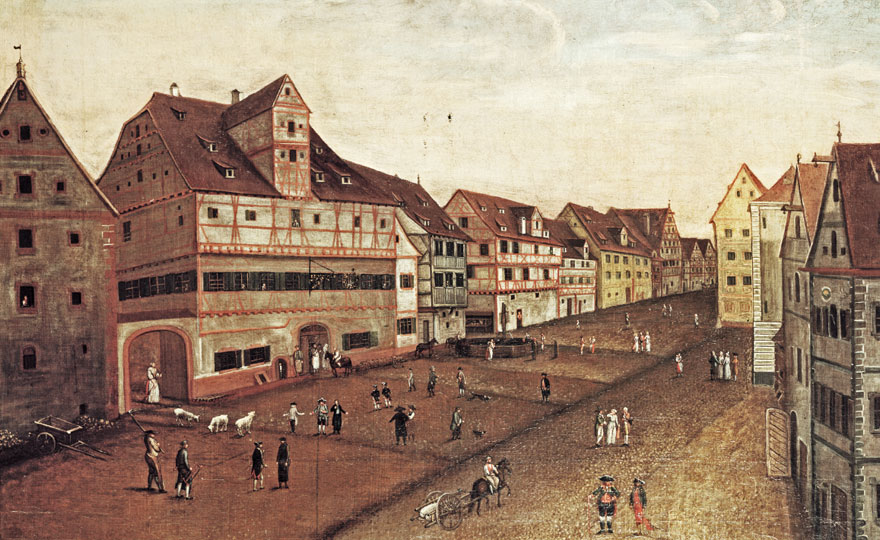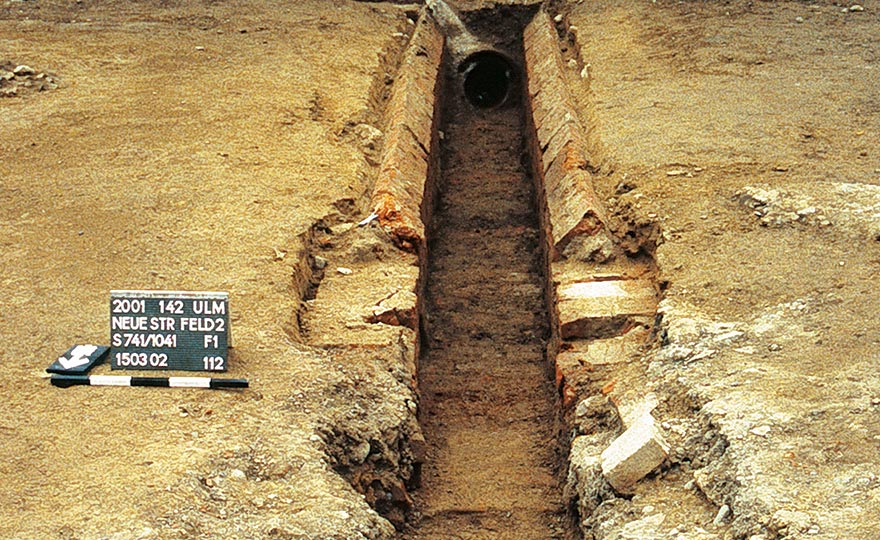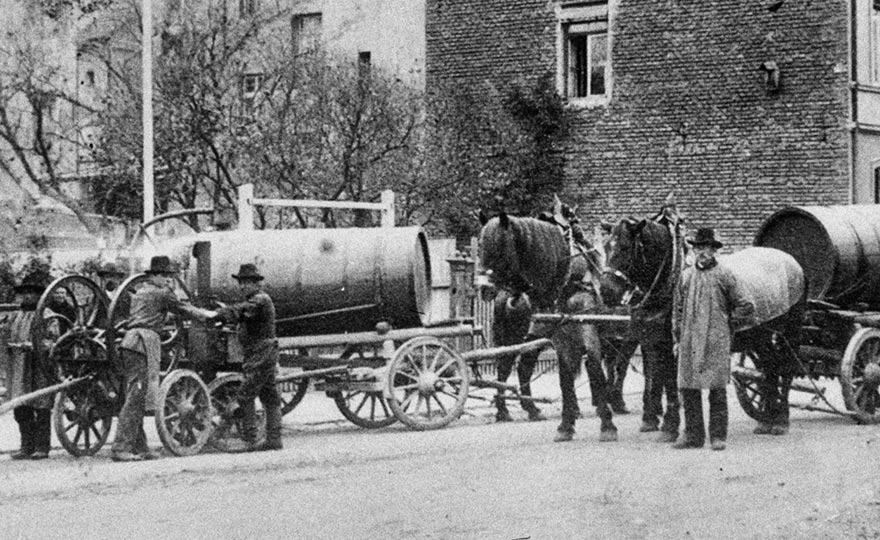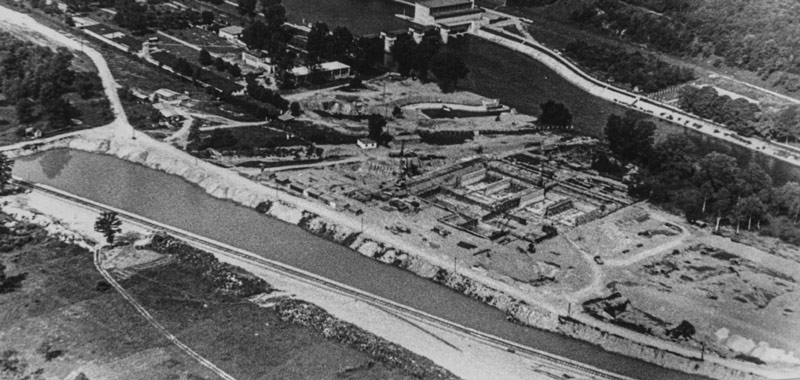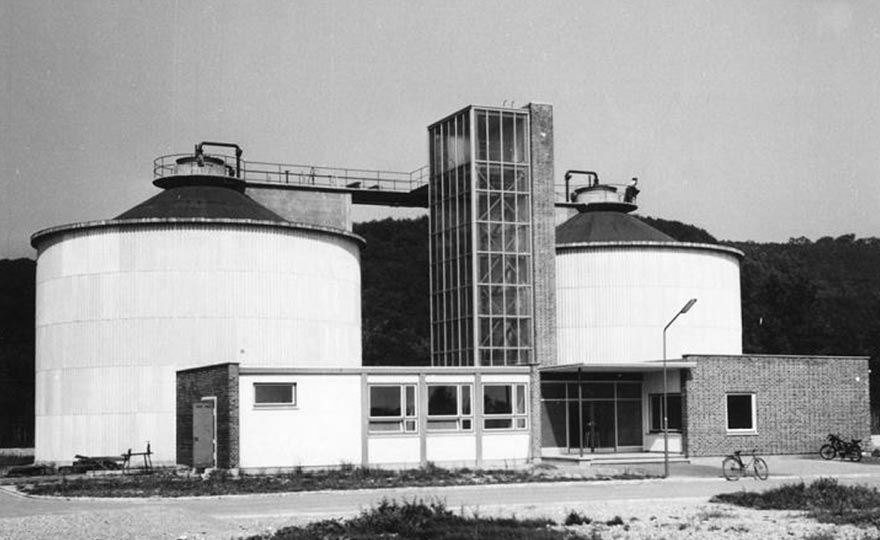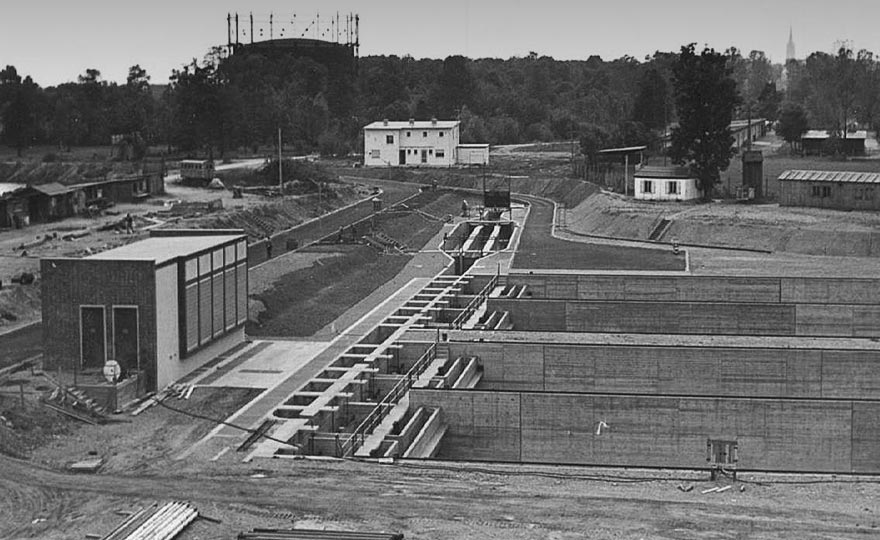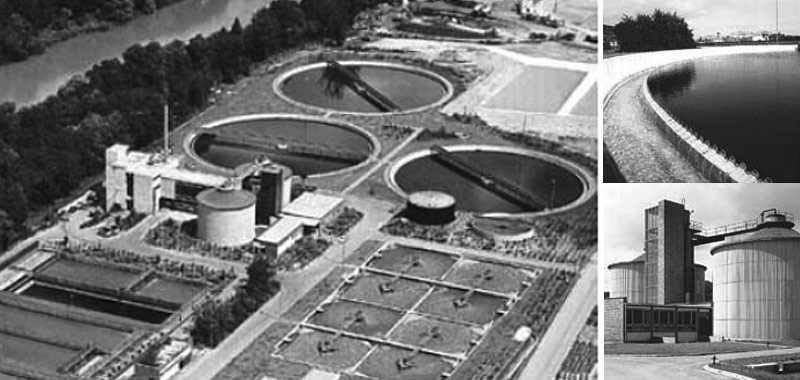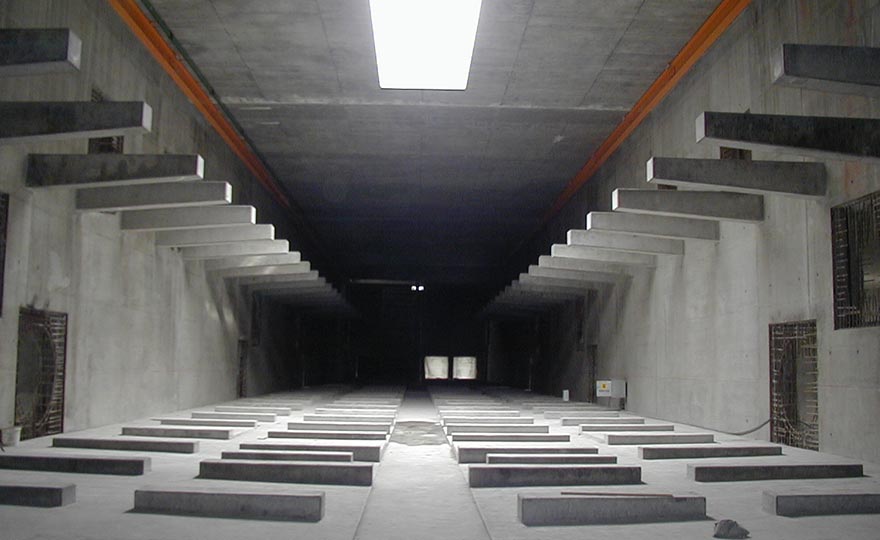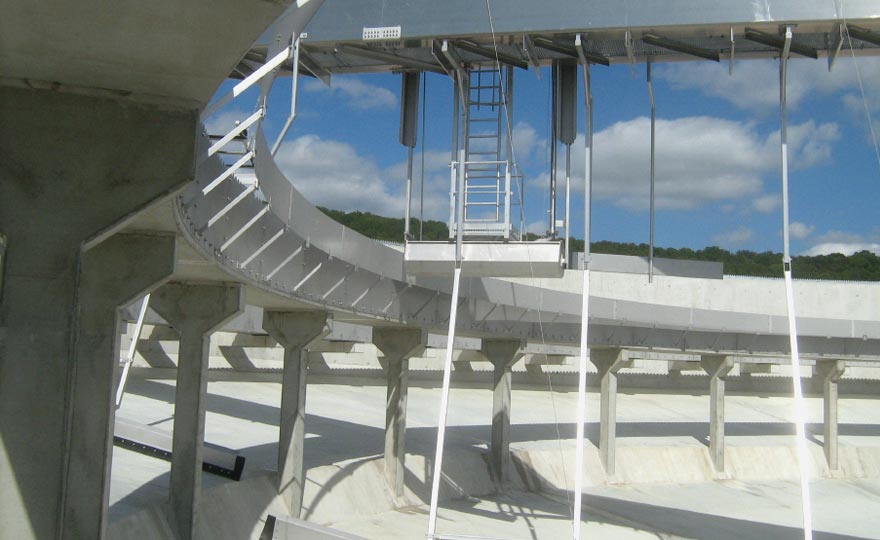History
Wastewater through the ages
For centuries, wastewater seeped directly into the ground or it was discharged into flowing waters. Contaminants entered the soil and polluted drinking water in wells, which caused disease and epidemics. It wasn’t until the second half of the 18th century that people realized the close connection between wastewater seeping into the ground and a city’s sanitary conditions. This triggered the systematic construction of drainage networks.
1836 - 1900 Sewer system in Ulm
Far into the 19th century, private residences and commercial businesses simply poured their wastewater out onto the road where it collected in open gutters. Or it was directed into sewer drains (Dolen)from where it usually went into the rivers Danube or Blau. The faecal matter of the inhabitants of Ulm usually ended up in larger cisterns made of brick – also called cesspools or pits – which had to be emptied from time to time.
In 1836, the city of Ulm started constructing a number of covered sewer drains that led into the rivers Danube and Blau. By 1900, most of the houses were connected to this sewer network. Faecal matter, however, still had to be disposed of via the cesspools, a job which was increasingly taken over by machines thanks to the technical progress of the age. Back then, “Pfuhl’s artillery” was the commonly used term for the Pfuhl wagons in Ulm that emptied the cesspools because they looked like artillery carriages.
1873 Water Closet
In 1873 the establishment of a central water supply led to the introduction of the progressive “water closet” in Ulm’s households. This, in turn, necessitated the construction of a suitable water-based sewer network that needed to be designed large enough to handle such large wastewater amounts.
1910 The Pits of Ulm
In 1910, the city was ordered to build a wastewater treatment plant. Until such a plant existed, the sewage had to be pretreated in residential treatment systems, the so-called “Ulmer Gruben” (“Pits of Ulm”). These residential treatment systems were based on the following technical principle: Solid particles settled into the pits. The liquid was introduced as wastewater into the sewer system and went into the rivers Danube or Blau.
1912 Neu-Ulm sewer network
The young city of Neu-Ulm was lucky enough to apply state of the art technical knowledge and developments about construction and operation of a sewer network from the beginning. In 1900 a central water supply system was build and, as of 1912, both the eastern part of the city and the city center had a sewer network. Before the wastewater drained into the Danube, it was supposed to undergo at least mechanical treatment. In 1912, the city was asked to build a wastewater treatment plant. But because of the two world wars, it took a few decades before the cities of Ulm and Neu-Ulm actually were able to build a joint wastewater treatment plant.
1930 Main sewer canals in the city of Ulm
It wasn’t until mid-1930 that main sewer canals connected the sewers and managed to collect all the wastewater and drain it into the Danube below Ulm’s Friedrichsau area.
1954 Construction of the Steinhäule Treatment Plan
It wasn’t until the construction of the Danube power plant “Böfinger Halde” that the cities of Ulm and Neu-Ulm had a clear idea where to construct a joint wastewater treatment plant. The power plant’s positioning made it possible to operate using the natural gradient of the new sewer drain. As a result, the plant was build in “Steinhäule” which was equally advantageous for both cities.
1957 The first joint wastewater treatment plant
In 1957 – after two years of construction – the joint mechanical wastewater collection treatment plant for 242,000 (PE) went into operation.
1973 Biological treatment phase and sewage sludge treatment
For waterway protection reasons, the mechanical treatment system was comprehensively expanded by the biological treatment stage in 1973. It increased the treatment performance from 25% to 90%.
In 1973, a system for dewatering and incinerating sewage sludge was built for the eco-friendly disposal of solids captured in the mechanical and biological treatment stages.
1977 - 1980 Capacity Expansions
Demographic and economic development resulted in a capacity expansion of the biological treatment stage to a population equivalent of 330,000 (PE) through the construction of additional aeration tanks and clarifiers.
1984 Establishment of the Administrative Union
The catchment area of the treatment plant gradually increased due to smaller treatment plants being shut down and additional parts of the cities plus municipalities along the rivers Iller, Blau and Weihung were connected. In 1984, this resulted in the establishment of the “Zweckverband Klärwerk Steinhäule” (Steinhäule Treatment Plant Administrative Union), which has operated the plant ever since, and today consists of 12 association members.
1985 - 1988 Construction of a Blower Station and Installation of Turbo Compressors
The aeration tanks were converted from surface aeration to pressure aeration. The oxygen required by the microorganisms in the biological treatment stage was now introduced into the aeration tank using pressurized aeration. Four new turbo compressors improved the aeration in the aeration tank through so-called domes. Thanks to this process, treatment performance increased to 95%.
1989 - 1993 Capacity Expansions
Further expansion of the biological treatment stage in order to cover a population equivalent of 440,000 (PE). In addition a chemical treatment stage was put into operation to eliminate phosphorus (more than 90%).
1994 - 1997 Capacity Expansion and Flue Gas Purification
An additional treatment line was constructed which necessitated reconstruction and new construction measures to the wastewater distribution system within the treatment plant. The sewage sludge incineration system was equipped with a new flue-gas treatment system to reduce emissions.
1999 - 2000 Reconstruction of the Mechanical Treatment Stage
The mechanical treatment stage was comprehensively overhauled: Reconstruction of the screen and grit chamber.
2000 - 2005 Expansions
The treatment plant was expanded with another clarifier and a high-water pump station. The denitrification plant and biological phosphorus elimination were reconstructed.
2007 - 2015 The adsorptive treatment stage
Construction and going live of the adsorptive treatment stage.
